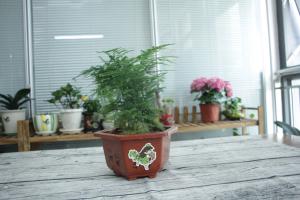When to Plant Trees in North Carolina
North Carolina is a state rich in natural beauty and diverse wildlife. Trees play a vital role in preserving the state's environment, and planting trees is an important activity for anyone interested in conservation efforts. The question, however, is when is the best time to plant trees in North Carolina?
The Best Time to Plant Trees
The ideal tree planting season in North Carolina runs from October to March. During this period, the temperatures are cooler, rainfall is more frequent, and the soil is moist. Cooler weather conditions are beneficial for newly planted trees as they reduce water loss from the leaves and help the plant establish healthy roots before the scorching summer heat arrives.
In North Carolina, fall planting is preferred, and late November or early December is considered the best time to plant trees. During this period, the weather is mild, and the soil remains relatively warm, facilitating healthy root growth. Winter planting is also beneficial, and the best time to do so is between January and February. At this time, deciduous trees are dormant, which makes transplanting less stressful for them.
Factors to Consider When Planting Trees in North Carolina
Several factors need to be taken into account when planting trees in North Carolina. The type of tree, soil conditions, and the location where you intend to plant the tree are critical considerations. Below are some additional guidelines for planting trees in North Carolina:
Soil Preparation
The quality of the soil where you intend to plant the tree can significantly influence its growth and survival. The soil must be well-drained, fertile, and moist to support healthy root development. It is wise to test the soil before planting to determine its acidity levels and nutrient content. You can amend the soil with organic matter if necessary to improve its nutrient levels.
Tree Selection
The type of tree you decide to plant determines its suitability for the intended location. North Carolina has a variety of trees suitable for its climate, including oaks, dogwoods, magnolias, and pines. You should also consider the tree's size, shape, and growth rate when making your selection. Trees with vigorous growth rates require more space, while smaller trees may be more manageable in confined spaces.
Planting Location
The location where you plant the tree determines its exposure to sunlight, moisture, and wind. Consider planting the tree in an area that receives adequate sunlight and protection from the wind. Avoid planting the tree in locations with standing water, as excess water can harm or kill the tree.
Caring for Newly Planted Trees
After planting, the tree requires regular watering to help it establish healthy roots. Water the tree deeply but less frequently, allowing the soil to dry between watering. Avoid overwatering, as this can cause root rot and other fungal diseases. It is also essential to mulch the base of the tree to conserve moisture, suppress weed growth, and protect the tree's roots from extreme temperatures.
In conclusion, planting trees is a rewarding experience that contributes to North Carolina's environmental conservation efforts. However, proper planning, care, and maintenance are essential to ensure the tree's survival and growth. By following the guidelines discussed in this article, you can plant trees that will thrive and contribute to the state's natural beauty for years to come.

 how many times do yo...
how many times do yo... how many planted tre...
how many planted tre... how many pine trees ...
how many pine trees ... how many pecan trees...
how many pecan trees... how many plants comp...
how many plants comp... how many plants can ...
how many plants can ... how many plants and ...
how many plants and ... how many pepper plan...
how many pepper plan...

































